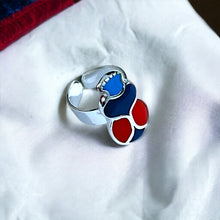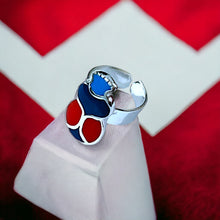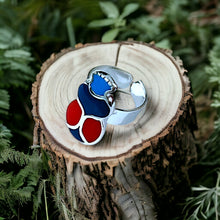
Crafted with elegance and steeped in history, the Royal Scarab Adjustable Silver Ring merges ancient Egyptian symbolism with modern sophistication. Inspired by the sacred scarab beetle, a symbol of transformation and protection in ancient Egypt, this exquisite piece adapts seamlessly to any finger, echoing the timeless allure of a bygone era.
- History: Inspired by ancient Egyptian culture, symbolizing rebirth and protection.
- Spiritually: Represents transformation, renewal, and the eternal cycle of life.
- Talisman: Believed to bring luck, ward off negative energy, and foster personal growth.
- Handmade: Crafted with intricate detail and care by skilled artisans.
- Healing: Associated with mental clarity, inner peace, and spiritual awakening.
- Material Silver: Made from sterling silver, a metal known for its purity and durability.
- Symbolism: Scarab beetle symbolizes the sun, resurrection, and protection in Egyptian mythology.
- How to Wear: Adjustable design ensures a perfect fit on any finger, suitable for daily wear or special occasions.
- Royal Scarab Adjustable Silver Ring: A timeless piece that merges ancient mysticism with contemporary elegance.
History Side For Those Who Are Interested
The Egyptian Royal Scarab Amulet holds a significant place in the annals of ancient Egyptian history, embodying a profound cultural and religious significance that spans millennia.
Originating from the ancient Egyptian civilization, which thrived along the banks of the Nile River for over three millennia, the scarab beetle (Scarabaeus sacer) held a revered status in Egyptian mythology and symbolism. The scarab beetle, known for its habit of rolling balls of dung as a food source and for its reproduction, became closely associated with concepts of creation, rebirth, and protection due to its life cycle and behaviors.
The use of scarab beetles in Egyptian art and jewelry dates back to the Predynastic Period (c. 6000–3150 BCE). However, it was during the Middle Kingdom (c. 2055–1650 BCE) that the scarab amulet rose to prominence as a symbol of royal power and protection.
The scarab amulet, typically carved from stone or faience (a ceramic material), often featured intricate designs and hieroglyphic inscriptions. These inscriptions frequently invoked protective spells, blessings, or the names of deities, imbuing the amulet with magical properties believed to safeguard the wearer from harm and ensure a prosperous afterlife.
As the ancient Egyptians were deeply religious, they believed in an afterlife where the deceased would undergo a perilous journey through the underworld. To aid the deceased in navigating this journey successfully, funerary practices included the placement of amulets, such as the scarab, within the burial wrappings or on the mummy itself. The scarab amulet, positioned over the heart or placed within the mummy's bandages, was believed to protect the deceased and facilitate their rebirth into the afterlife.
The scarab amulet also held specific significance within royal circles. Kings and queens were often depicted wearing scarab amulets in statues, reliefs, and jewelry, symbolizing their divine authority and connection to the gods. Royal scarab amulets were often larger and more ornate than those of commoners, adorned with precious metals and gemstones to signify the wearer's elevated status.
During the New Kingdom (c. 1550–1070 BCE), Egypt experienced a cultural and religious renaissance, and the scarab amulet continued to play a prominent role in both religious and secular contexts. The reign of Amenhotep III (c. 1386–1353 BCE) is particularly notable for the widespread production and distribution of scarab amulets, many of which bore inscriptions celebrating the pharaoh's accomplishments and divine favor.
The tradition of using scarab amulets persisted into the Late Period (c. 664–332 BCE) and even into the Ptolemaic and Roman periods of Egyptian history. However, with the decline of traditional Egyptian religion and the rise of Christianity and Islam, the use of scarab amulets gradually waned, and they became more associated with antiquity and historical artifacts.
Today, Egyptian scarab amulets are highly sought-after artifacts in the field of Egyptology and are prized by collectors and enthusiasts worldwide for their historical significance and intricate craftsmanship. They serve as enduring symbols of the rich cultural heritage and spiritual beliefs of ancient Egypt, continuing to fascinate and inspire awe in people of all ages.















